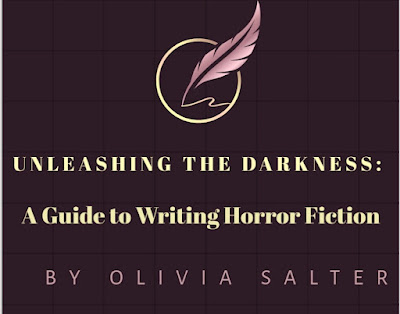
Crafting Fear: The Key Story Beats for Writing a Horror Novel or Short Story
By Olivia Salter
Horror stories have a unique power to evoke visceral emotions—fear, suspense, and unease. Whether you're writing a sprawling horror novel or a tightly wound short story, hitting the right beats is essential to keeping readers engaged. In this guide, we’ll explore the key story beats you need to craft a compelling horror narrative.
1. The Hook: Start with Unease
The opening of your story must grab readers and immediately set a tone of dread or intrigue. For novels, this could be a subtle clue—something feels "off" in the world. In a short story, jump straight into a chilling moment or situation.
Example:
- A novel might open with a seemingly mundane event, like a family moving into a new house, but the air feels heavy, and shadows move just slightly wrong.
- A short story might begin with a character finding an eerie note that says, "I saw you last night."
2. Establish the Ordinary World: Build Contrast
Introduce your protagonist’s normal life and hint at their desires, fears, or flaws. This contrast makes the horror that follows more impactful.
- In novels, this section can expand to develop secondary characters and subplots.
- In short stories, focus on a single character's perspective or an intense scenario.
Tip: Ground the horror in a relatable setting—suburban homes, lonely highways, or quiet forests.
3. The Inciting Incident: The Door Opens
This is the moment when something disrupts the ordinary world, pulling your protagonist into the story’s central conflict.
Examples:
- A group of friends discovers a cursed object (novel).
- A character hears whispering from the walls of their home (short story).
4. Rising Tension: The Unraveling
Introduce small, escalating scares that build tension and deepen the mystery. Each event should increase the stakes or reveal more about the horror’s true nature.
- Novels allow for a slow boil, where unease becomes terror over time.
- Short stories require rapid escalation.
Example Techniques:
- Strange sounds, flickering lights, or unexplained disappearances.
- The protagonist begins to question their sanity.
5. The Revelation: The Horror Revealed
This beat is the turning point where the protagonist confronts the true nature of the horror.
- In novels, this revelation can occur halfway through, allowing for an extended struggle.
- In short stories, this often comes near the climax for maximum impact.
Example: The friendly neighbor is revealed to be an ancient demon feeding on the town’s children.
6. The Climax: Face the Fear
The protagonist must confront the source of the horror in a tense, high-stakes showdown. This is where you deliver the story’s most frightening moments.
Questions to Consider:
- Will the protagonist triumph, or will they fall victim to the horror?
- Is the horror truly defeated, or will it return?
7. The Aftermath: The Lingering Dread
After the climax, show the consequences of the protagonist's actions and the lasting effects of the horror.
- Novels may explore how the protagonist's life is forever changed.
- Short stories often end abruptly, leaving readers with a sense of unease or ambiguity.
Example: The protagonist survives but hears faint whispers in their dreams, hinting the horror isn’t over.
Conclusion: Embrace the Unknown
The beauty of horror lies in its ability to delve into the unknown, the uncanny, and the deeply personal fears of your audience. Whether writing a novel or short story, these beats provide a framework to craft a story that lingers in the reader’s mind long after the final page.
Final Tip: Don’t shy away from experimenting with structure or wreak havoc on expectations—fear thrives on surprise.


